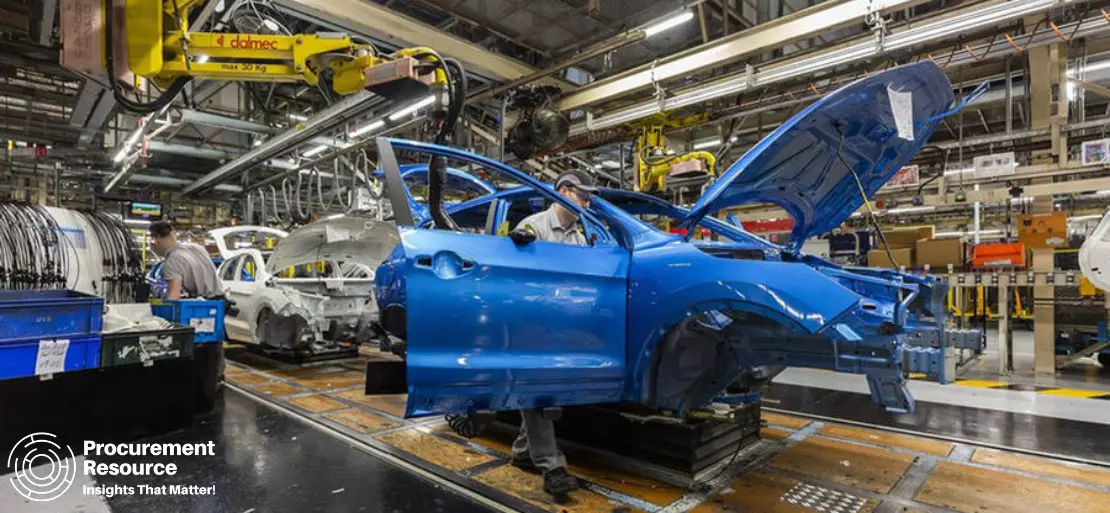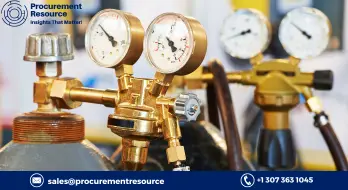Post-COVID Impact of the Automotive Industry on the Chemical Sector

The automotive industry has served as a critical component of economic growth with extensive interconnections to both upstream (e.g., steel, chemical, textiles) and downstream (e.g., repair, mobility services) industries. However, due to the COVID-19 pandemic, it has suffered a huge decline in demand.
The vehicle manufacturers have been affected by the low availability of raw materials, labour, travel restrictions, and more. The ripple created by the decreasing demand has significantly affected the co-related chemical industry. Since the growth of the automotive industry has become slower due to disturbed assembly chains, it has created lower demand for raw materials, thus, affecting the chemical industry. The impact on the chemical industry has been widespread.
The automotive industry has been witnessing reduced demand for chemicals such as butanediol (BDO), polyol, epoxy resins, oxo-alcohols, acrylic acid, acrylonitrile butadiene rubber (NBR), PMMA, and plasticizers. These problems created by the pandemic will create major differences in post-COVID recovery for both the automotive and chemical industries .
Post-COVID Effects on Automotive Industry
The supply chains are witnessing a significant number of shutdowns due to factors like lack of labour, travel restrictions, and existing panic of the pandemic. The production lines which were shut initially are also expected to face problems like a disrupted production line, shortage of required parts, shortage of raw materials, and more.
Due to the resulting problems, automotive sales are projected to drop globally with knock-on effects for chemicals demand in many value chains. Low economy rate and long-term panic will also cause lower vehicle sales as consumers are more focused on day-to-day purchases.
In the European Union, the strong fall in the demand for vehicles has been stabilized. Although the demand brings chronic overcapacity and high prices, resulting in brands like Mitsubishi announcing their exit from the European market. North American manufacturers will also slowly progress in the market. However, much of their supply is expected to remain in inventory as demand is estimated to be lower than the pre-COVID period.
China, on the other hand, has planned to cut the costs of its automotive products to boost sales, with the government subsidising the purchase of electronic vehicles. India will also face a slow growth due to the expected longer lockdown restrictions.
Post-COVID Effects of the Automotive Industry on the Chemical Sector
The automotive industry relies on the chemical industry for numerous things like raw materials, vehicle parts, cleaning solutions, glass formation, protection against corrosion, and others. With such extensive applications in the automotive industry, it is likely that the chemical industry will also be affected by the ripples created by the automotive industry.
With disturbed supply chains, the automotive industry is expected to witness a lower demand for chemicals such as nylon 6-6, polyol, and epoxy resin, among others. Since the production lines will face shortages in vehicle parts due to lower demand, the chemicals required to make these parts will also face a dampened demand. In May 2020, the European soda ash markets have been showing negative effects caused by the lower automotive demand, with slowed flat glass production for vehicles.
Even though the automotive industry has experienced a slowdown due to the pandemic, it is still identified as a growth area for many of the chemical companies as they focus on sustainability and opportunities in lightweight vehicles, which need polymers. The future of the chemical industry’s demand will be the provision of materials for electric vehicles such as lightweight polymers/composites and components for batteries.
However, the switch to electric vehicles from internal-combustion engine may lead to the decline of the demand growth for high heat-resistant materials such as nylon 6,6. But the increased need for fuel efficiency will drive demand for materials used in lightweight vehicles which are made from a combination of polymers.
Since many of the car companies are suffering from widespread overcapacity, they feel the need to heavily invest in the electrical vehicle technology. Regulators across the globe are trying to push the target for adopting electric vehicle and are aiming to restrict or even ban the use of diesel and petrol-powered cars from city streets. Thus, the automotive sector is investing heavily in electric vehicles.
In May 2020, Volvo, a leading multinational automotive company, signed a multi-billion-dollar deal with two Asian companies to supply batteries until 2028. Volvo aims to garner half its sales through electric vehicles by 2025.
Volkswagen, a German automotive company, also aims to sell nearly 3 million electric vehicles annually by 2025 and is spending € 50 billion to secure access to batteries, thus, creating more potential demand for the chemical sector.
As vehicles are becoming modern, the companies are digitising them for a better user experience. This, too, provides an opportunity for those in the chemical sector as it will require computers, which are further made with the help of polymers and other chemicals.
While the chemical industry has witnessed a lower demand from the automotive industry during the ongoing pandemic, with the growing applications of chemicals in the automotive industry, the post-COVID time will see a growth in demand for the essential chemicals used in the automotive production.
Also, due to the pandemic slowing down and decreasing restrictions, the chemical demand in the automotive sector is likely to grow at a steady pace soon. Depending upon the current trajectory, a full post-COVID recovery is, however, expected to be attained only in the next 1-3 years.


